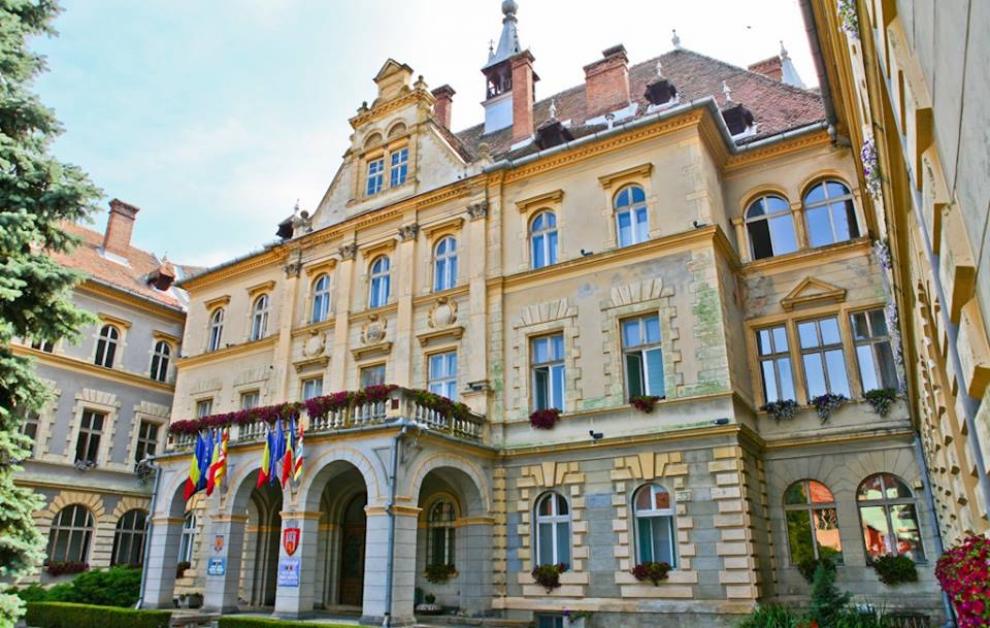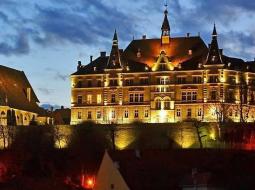Thessaloniki gets ready for its metro launch in November
The underground rapid transit lines have been under construction for almost two decades due to various project delays
 TheMayor.EU logo
TheMayor.EU logo 
The first known settlement is attested in a document in the year 1280, under the name Castrum Sex, and in 1298, under the dialectal name Schespurch (purch=fortress). The Romanian name Sighisoara appears, written, in a document issued by Vlad Dracul in 1431.
The name’s origins are unknown: castrum, purch, burg means fortress; sex is the number six, so we could translate it as ,,the sixth fortress” (it could also be schäs or sches, which could mean the name of the brook, Saes, transcribed in Latin by a foreigner with the word sex; in this case we can talk about the Fortress on the Saes).
In the opinion of Gernot Nussbächer, the name Castrum Sex is explained by the fact that during the mid 14th century Sighisoara was occupying the sixth rank among the seven Saxon Chairs, attested in a document from 1349, which testifies, of course, a former status.
Sighisoara is closely connected with the Transylvanian history and has always been the site of rich cultural traditions. Therefore, visitors can be sure to find a multifarious range of cultural facilities and events.
Sighisoara is a city on the Tarnava Mare River in Mures Country, Romania. Located in the historic region of Transylvania, Sighișoara has 36 336 inhabitants out of which 17.466 or 48,06% are men, and 18.870 or 51,93% - women. The town council consists of 19 councillors who are chosen every four years. Composition of the council: Mayor, one deputy-mayor and 18 councillors.
The main economic activities are in the textile industry (weavings and tailorings), ceramic industry (porcelain, pottery), construction, food production, wood processing and tourism. The companies in Sighisoara are all private and regarding foreign investors, these are mainly German and Italian.
Most of the local economy, regarding the number of firms, is represented by the small and medium-sized enterprises, and although manufactures represent a rate of 2%, they have a significant share in the total number of employees and their turnover.

The city of Sighisoara, hailed as „the most beautiful and well kept fortified town in Transylvania”, is situated in the center of Romania, at the crossroads of important commercial roads. Its location made the town an important commercial, handicrafts, administrative and cultural center. Nowadays all these are supplemented by its importance as a tourism center - the city hosts the best kept medieval citadel and is also a starting point for outings in its environs.
Sighisoara, an authentic museum city offers the modern visitor the chance to a journey back in time. Since 1999 Sighişoara was put on the list of UNESCO World Heritage, being considered the best example of Transylvania and Central Europe.
Sighisoara’s main touristic attraction is the Medieval Citadel, with well preserved towers, bastions, churches and houses. The Clock Tower is the main entrance to the citadel, opposite the Tailor’s Tower. It gained its name thanks to its clock with figurines, unique to Romania. The Clock Tower constitutes a symbolic image of Sighisoara and unlike other towers, built by different guilds, it belonged to the whole community, being the house of the Council. Nowadays, the Clock Tower is housing the History Museum of Sighisoara Municipality.
Address: Piața Muzeului №7, Sighișoara 545400